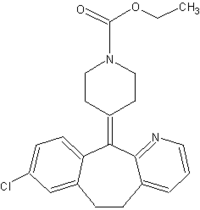Claritin took center stage last month along OTC aisles, hitting retail shelves during the Christmas-shopping frenzy. In the first week, stores were peppered with Claritin signage enticing consumers to "try the most prescribed allergy medication today!" But before any red-eyed allergy sufferers could blink, Wyeth joined the OTC loratadine space with its Alavert offering.
And private label competition is heating up, as well. According to Nancy Fitzsimmons, Novartis OTC spokeswoman, Novartis will launch loratadine tablets as a branded offering--Tavist NS (for non-sedating)--in addition to a private label offering in March. It will be the first time that the company will enter the private label business, Fitzsimmons said.
Perennial Private label manufacturer Perrigo will have a loratadine offering sometime this spring. However, Chris Kapral, director of OTC marketing for Perrigo, stated that there would not be "any significant sales of the Claritin product...before July."
Absent from the loratadine competition is McNeil Consumer Health, which filed a supplementary NDA for loratadine last year. "At this time, we have no plans to launch a loratadine product," commented Gary Esterow, director of communications at McNeil.
"If McNeil is not going to [launch], and they've gone through the trouble of getting the approval," the company could be looking to sell its approval to another OTC maker, hypothesized Steve Francesco, publisher of Switch magazine. "The interesting question is what about a Benadryl non-sedating?"
COPYRIGHT 2003 Reproduced with permission of the copyright holder. Further reproduction or distribution is prohibited without permission.
COPYRIGHT 2003 Gale Group



